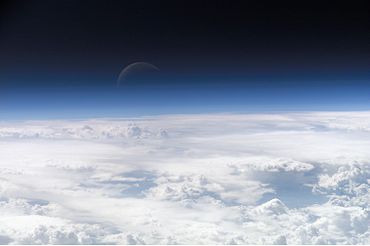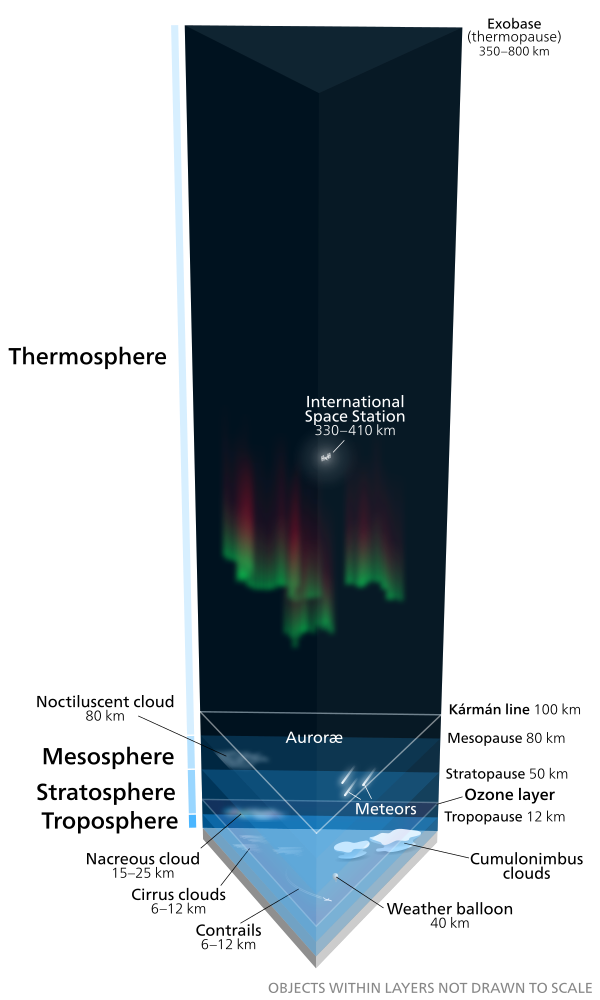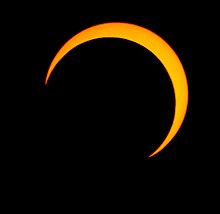
A partial lunar eclipse is coming and will be visible on the night of July 16, 2019, and July 17, 2019. It will be the last lunar eclipse of 2019. The partial lunar eclipse will be visible also from a number of other places on earth.
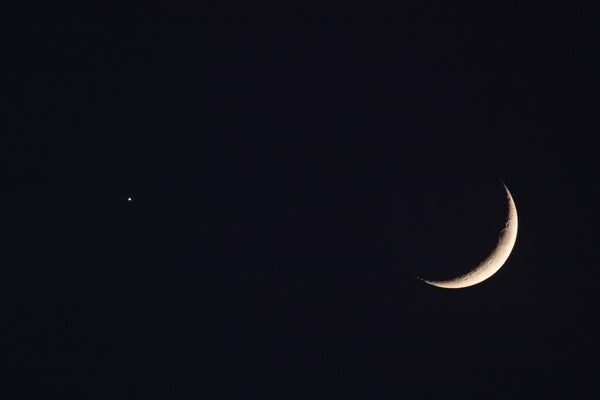
But every jaw-dropping moment of an eclipse is simply revealing what was there all along; somethings that, perhaps, we sometimes collectively just take for granted.
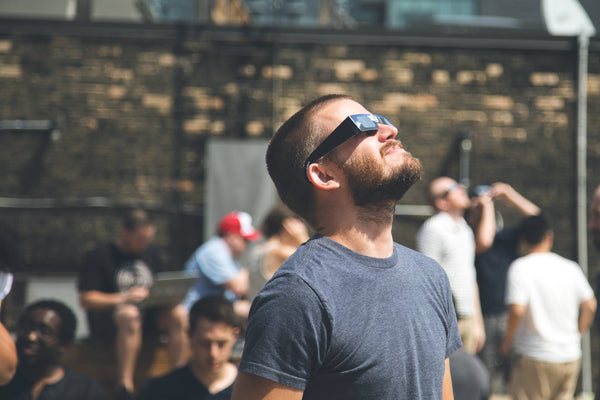
According to reports, the Moon will enter penumbra on July 17, 2019, at around 12:12 AM.
The Moon will enter umbra at around 1.31 am and the maximum eclipse will be seen at around at 3 am.
During this partial Lunar Eclipse, the moon will travel through the Earth’s outer penumbra before and after partially sweeping through the Earth’s inner dark umbral shadow. However, according to EarthSky, the penumbral stage will be so faint that most people won’t be even able to notice it.
These dynamic lunar phenomena were feared by our ancient ancestors. Early human civilizations built their societies around season changes and annual movements of the sun, so when an eclipse occurred they believed that the natural order had been compromised.
To them, eclipses were a harbinger of danger — quite specifically, the apocalypse. Although we no longer connect these lunations to end days, astrologically speaking, eclipses are still a very big deal.
In 2020, all four lunar eclipses will be hard-to-see penumbral eclipses. So if you’re in the right spot to watch tonight’s partial lunar eclipse, by all means do so.
The last until 2021
This will be the last time that the Earth’s dark shadow touches the moon’s surface until May 26, 2021.
As interest in astrotourism grows, eclipse chasing has become an increasingly popular activity. Whether you travel to see an eclipse or are lucky enough to enjoy them as they pass over your home, there’s no denying that eclipses are powerful and humbling to experience.
But even though eclipses are major, they’re actually not that rare. In fact, each year, there are between three and seven eclipses and they often occur in clusters. An eclipse series began on July 13, 2018 and will continue through 2020 .
Partial lunar eclipse occurs when the earth moves between the sun and moon but the three celestial bodies do not form a straight line in space. When that happens, a part of the moon’s surface is covered by the darkest, central part of the earth’s shadow, called the umbra.
More often than not, however, there is no eclipse at full moon. The full moon usually avoids being eclipsed because it swings to the north or south of the Earth’s shadow. This year, in 2019, we have 12 full moons but only two lunar eclipses.
mnumbral eclipses are typically not discernible from a regular Moon in the skies.US space agency NASA said:
“Throughout the year, the Moon’s orbital tilt remains fixed with respect to the stars, meaning that it changes with respect to the Sun.“
About twice a year, this puts the Moon in just the right position to pass through the Earth’s shadow, causing a lunar eclipse.
As the Moon passes into the central part of the Earth’s shadow, called the umbra, it darkens dramatically.”
Will the eclipse be visible from Asia and other countries?
The partial lunar eclipse will be visible in the majority of Asian nations, including India. The people living in the western and central region of India will witness the entire event, while those living in the eastern regions will get to see the partial lunar eclipse at moonset time in the wee hours.
This event however favours the Eastern Hemisphere, known colloquially as the “Old World”: Africa, Europe and western Asia.
Those located in South America, Africa, the Middle East, Southeast Asia, Australia, and parts of Europe will be able to experience and see July’s lunar eclipse phenomenon firsthand. So that doesn’t exactly bode well for those that live in North America.
South America will see the moon rise already within the Earth’s shadow. Conversely, for central and eastern Asia and Australia, the eclipse will still be in progress when the moon sets during the dawn hours of July 17.
How long will the eclipse last?
According to NASA, at least two partial lunar eclipses happen every year, but total lunar eclipses are very rare. A lunar eclipse can last for a few hours.
UK and the Partial Eclipse
This partial eclipse of the Moon will be visible from across the UK on the evening of 16/17 July, with the Moon rising already partially immersed in Earth’s deep umbral shadow.
You’ll need to find an observing site with an uninterrupted south-eastern outlook, but a humble pair of binoculars is a piece of equipment that could enhance your enjoyment of the event.
The Moon rises at around 9pm BST (20:00 UT ) and as it climbs slowly clear of the murky south-eastern horizon it shouldn’t be too difficult to spot an increasing fraction of its disc becoming darkened behind the curved shadow of the Earth.
How clear is the Lunar features?
How clearly defined the lunar features covered by Earth’s shadow and the edge of the shadow itself appear during the eclipse depends on local sky conditions.
Make sure you have a pair of binoculars with you. For this eclipse, 65.3 per cent of the Moon’s diameter will be covered in deep shadow at the time of greatest eclipse. This occurs at 10.30pm BST (from London), by which time the Moon has hauled itself about eight degrees clear of the horizon.
The end of the umbral phase of the eclipse occurs at midnight (BST), with the Moon at an altitude of around 15 degrees.
The final chapter of this eclipse features the very subtle penumbral phase, when our satellite has moved wholly out of Earth’s deep umbral shadow. The penumbral phases of an eclipse are never easy to see, and with the Moon hanging relatively low over the south-eastern horizon, you’ll need pristine local sky conditions to see the ill-defined edge of Earth’s outer shadow steadily retreating across the lunar disc.
The end of the penumbral phase at 1.17am BST signals the end of the eclipse.
This event however favours the Eastern Hemisphere, known colloquially as the “Old World”: Africa, Europe and western Asia.
In fact, according to paceTourismGuide.com, only those located in South America, Africa, the Middle East, Southeast Asia, Australia, and parts of Europe will be able to experience and see July’s lunar eclipse phenomenon firsthand. So that doesn’t exactly bode well for those of us in North America.
South America will see the moon rise already within the Earth’s shadow. Conversely, for central and eastern Asia and Australia, the eclipse will still be in progress when the moon sets during the dawn hours of July 17.
The moon leaves the darker shadow at midnight, and the eclipse ends when it exits the penumbra 79 minutes later.
The moon will be low throughout the eclipse, so stargazers will need an unobstructed south-eastern and southern horizon. “You’re looking for anywhere that has a low unobstructed horizon, no tall buildings and trees in the way,” said Dr Morgan Hollis from the Royal Astronomical Society.
“Unlike a solar eclipse it’s entirely safe to watch a lunar eclipse with the naked eye, so this one is fine, you don’t need any special equipment and it should be fairly warm as well, given temperatures recently, it should be good if the weather is clear and the conditions are clear.”
If the Moon were in a perfectly circular orbit, a little closer to the Earth, and in the same orbital plane, there would be total solar eclipses every new moon.
However, since the Moon’s orbit is tilted at more than 5 degrees to the Earth’s orbit around the Sun, its shadow usually misses Earth.
A solar eclipse can only occur when the moon is close enough to the ecliptic plane during a new moon. Special conditions must occur for the two events to coincide because the Moon’s orbit crosses the ecliptic at its orbital nodes twice every draconic month (27.212220 days) while a new moon occurs one every synodic month (29.530587981 days).
Solar (and lunar) eclipses therefore happen only during eclipse seasons resulting in at least two, and up to five, solar eclipses each year; no more than two of which can be total eclipses.
The magnitude of the eclipse, which refers to the maximum percent of the moon’s diameter immersed within Earth’s umbral shadow, will be 65%.
This deepest stage of the eclipse will take place at 21:30 UTC, when the dark red-brown umbra will cover the northern 65% of the moon’s diameter. The moon will appear directly overhead, or very nearly so, from the Mozambique Channel.
When an eclipse of the Moon takes place, everyone on the night side of Earth can see it. About 35% of all eclipses are of the penumbral type which are very difficult to detect, even with a telescope.
Another 30% are partial eclipses which are easy to see with the unaided eye. The final 35% or so are total eclipses, and these are quite extrordinary events to behold.
References
Fred Espenak 1970, Lunar Eclipses for Beginners, Viewed 17 July 2019, <http://www.mreclipse.com/Special/LEprimer.html>.
Last Lunar Eclipse of 2019 Occurs Tuesday, Just in Time for Apollo … 1970, Viewed 17 July 2019, <https://www.space.com/lunar-eclipse-july-2019-explained.html>.
Lunar eclipse 2019: When is the partial lunar eclipse and where is it … 1970, Viewed 17 July 2019, <https://www.itv.com/news/2019-07-16/uk-stargazers-prepare-for-partial-lunar-eclipse/>.
Solar eclipse 1970, Viewed 17 July 2019, <https://en.wikipedia.org/wiki/Solar_eclipse>.
Source: https://www.jupiterfuture.com/blogs/space-1/lunar-eclipse-july-16-17-2019
source https://jupiterfuturespaceshop.wordpress.com/2019/07/17/partial-eclipse-july-16-17-2019/

